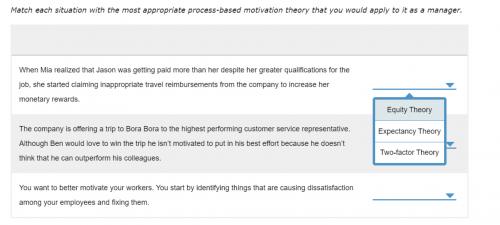 21
21 Part 9) 8 inches
Part 10) Length = 2 inches, width = 3 inches
Part 11) 3.14(4)²
Part 12) x=11°
Part 13) 40%
Part 14) 83%
Part 15) 64%
Step-by-step explanation:
Part 9) we know that
The area of a triangle is equal to
A=(1/2)bh
we have
A=24 in²
b=6 in
substitute and solve for h
24=(1/2)(6)h
48=6h
h=8 in
Part 10) we know that
The scale factor is 1/2
To find the new dimensions, multiply the original dimensions by the scale factor
Length=4*(1/2)=2 in
width=6*(1/2)=3 in
Part 11) we know that
If the leg of the triangle labeled 8 inches passes through the center of the circle
then
the diameter of the circle is 8 inches
the radius is
r=8/2=4 in > the radius is half the diameter
The area of the circle is equal to
A=πr²
substitute the values
A=3.14(4)²
Part 12) we know that
20°+(5x+15)°=90° > by complementary angles
so
Solve for x
(5x+15)°=90-20°
5x=70°-15°
x=55°/5=11°
Part 13) we know that
70 times represent the 100%
using proportion
100%/70=x/28
x=28*100%/70
x=40%
Part 14) we know that
Any customer has a 17% chance of winning a free laptop
so
the chance that a customer does not win a free laptop is equal to
100%-17%=83%
Part 15)
step 1
Find the area of the larger circle minus the smaller circle
A=π(5²-3²)=16π in²
step 2
Find the area of the larger circle
A=π(5²)=25π in²
step 3
Find the probability that a point chosen inside the larger circle is not in the shaded region
Divided the area of of the larger circle minus the smaller circle by the area of the larger circle
16π/25π=0.64=64%
 21
21 Part 9) 8 inches
Part 10) Length = 2 inches, width = 3 inches
Part 11) 3.14(4)²
Part 12) x=11°
Part 13) 40%
Part 14) 83%
Part 15) 64%
Step-by-step explanation:
Part 9) we know that
The area of a triangle is equal to
A=(1/2)bh
we have
A=24 in²
b=6 in
substitute and solve for h
24=(1/2)(6)h
48=6h
h=8 in
Part 10) we know that
The scale factor is 1/2
To find the new dimensions, multiply the original dimensions by the scale factor
Length=4*(1/2)=2 in
width=6*(1/2)=3 in
Part 11) we know that
If the leg of the triangle labeled 8 inches passes through the center of the circle
then
the diameter of the circle is 8 inches
the radius is
r=8/2=4 in > the radius is half the diameter
The area of the circle is equal to
A=πr²
substitute the values
A=3.14(4)²
Part 12) we know that
20°+(5x+15)°=90° > by complementary angles
so
Solve for x
(5x+15)°=90-20°
5x=70°-15°
x=55°/5=11°
Part 13) we know that
70 times represent the 100%
using proportion
100%/70=x/28
x=28*100%/70
x=40%
Part 14) we know that
Any customer has a 17% chance of winning a free laptop
so
the chance that a customer does not win a free laptop is equal to
100%-17%=83%
Part 15)
step 1
Find the area of the larger circle minus the smaller circle
A=π(5²-3²)=16π in²
step 2
Find the area of the larger circle
A=π(5²)=25π in²
step 3
Find the probability that a point chosen inside the larger circle is not in the shaded region
Divided the area of of the larger circle minus the smaller circle by the area of the larger circle
16π/25π=0.64=64%
Part 7) is the option 
Part 8) is the option B 
Part 9) is the option C 
Part 10) is the option C 
Part 11) is the option B scalene, isosceles, equilateral
Step-by-step explanation:
Part 7)
In this problem we know that



therefore

Part 8)
we know that
If triangle ABC is similar to triangle DEF
then
the ratio of their corresponding sides are equal and their corresponding angles are equal
In this problem
Applying the Pythagoras theorem

substitute the values


 ------> the triangles are congruent
------> the triangles are congruent
therefore

m∠D=
Part 9)
we know that
The sum of the internal angles of a triangle is equal to 
so
Let
x------> the third internal angle of the triangle

solve for x

Part 10)
we know that
the rule of the translation is

the coordinates of the pre-image of point 
Find the coordinates of the image of point A
Applying the rule of the translation


Part 11)
we know that
An isosceles triangle has two equal sides
An equilateral triangle has three equal sides
A scalene triangle has no equal sides
therefore
the answer is the option B
Part 7) is the option 
Part 8) is the option B 
Part 9) is the option C 
Part 10) is the option C 
Part 11) is the option B scalene, isosceles, equilateral
Step-by-step explanation:
Part 7)
In this problem we know that



therefore

Part 8)
we know that
If triangle ABC is similar to triangle DEF
then
the ratio of their corresponding sides are equal and their corresponding angles are equal
In this problem
Applying the Pythagoras theorem

substitute the values


 ------> the triangles are congruent
------> the triangles are congruent
therefore

m∠D=
Part 9)
we know that
The sum of the internal angles of a triangle is equal to 
so
Let
x------> the third internal angle of the triangle

solve for x

Part 10)
we know that
the rule of the translation is

the coordinates of the pre-image of point 
Find the coordinates of the image of point A
Applying the rule of the translation


Part 11)
we know that
An isosceles triangle has two equal sides
An equilateral triangle has three equal sides
A scalene triangle has no equal sides
therefore
the answer is the option B

 1
1  1
1 
Options:
a. The small land-owner had an advantage in the negotiations by possessing something that the mine needed.
b. It allowed for equality in the negotiations between interested parties.
c. The impoverished context allowed the government to gain access to the land.
d. No real impact?
Answer:
c. The impoverished context allowed the government to gain access to the land.
Explanation:
The explorations that led to the discovery of Tintaya mine go back to 1917. In 1971, the Peruvian government promoted the exploitation of the mine. In 1980, the expropriation of approximately 4,000 hectares of land, owned by the communities, was carried out. It is for this reason that started a dispute between the commoners and the Company. In 1985 the exploitation of Tintaya began and it became the third producer of the country. In 1994, the mine was bought by Broken Hill Proprietary (BHP), who subsequently merged with the company Billiton, forming the second biggest group in the world production of minerals. In 2001, the first proposal for the framework agreement was made public. An agreement was reached and the framework agreement was consolidated in 2003. The signature of the framework agreement was an innovative milestone. Never before, a mining company had agreed to transfer a percentage of profits to communities and to engage to dialogue with them at all times. In 2005, a violent takeover occurred of the Tintaya facilities. A reformulation of the framework agreement was demanded. The implementation of the framework agreement was taking place very slowly. The president of BHP Billiton had to suspend the mining activity until a new agreement was reached. Then the negotiations began again. Xstrata Cooper (now Glencore) bought Tintaya from BHP Billiton in 2006. The owner changed, but the same conflicts and mobilizations continued until 2012. The last stoppage lasted eight days. During this paralysis, violent acts occurred and even the mine was asked to close, which was completely rejected by the government. At present, no resolution or reformulation of the framework agreement has been reached.
So is often the case, the expansion of mining activity led to the expropriation or purchase of land, back in 1980, from five communities and left open conflicts (low prices, evictions, illegitimate negotiations, etc.), as well as various environmental and human rights problems.

It will provide an instant answer!
